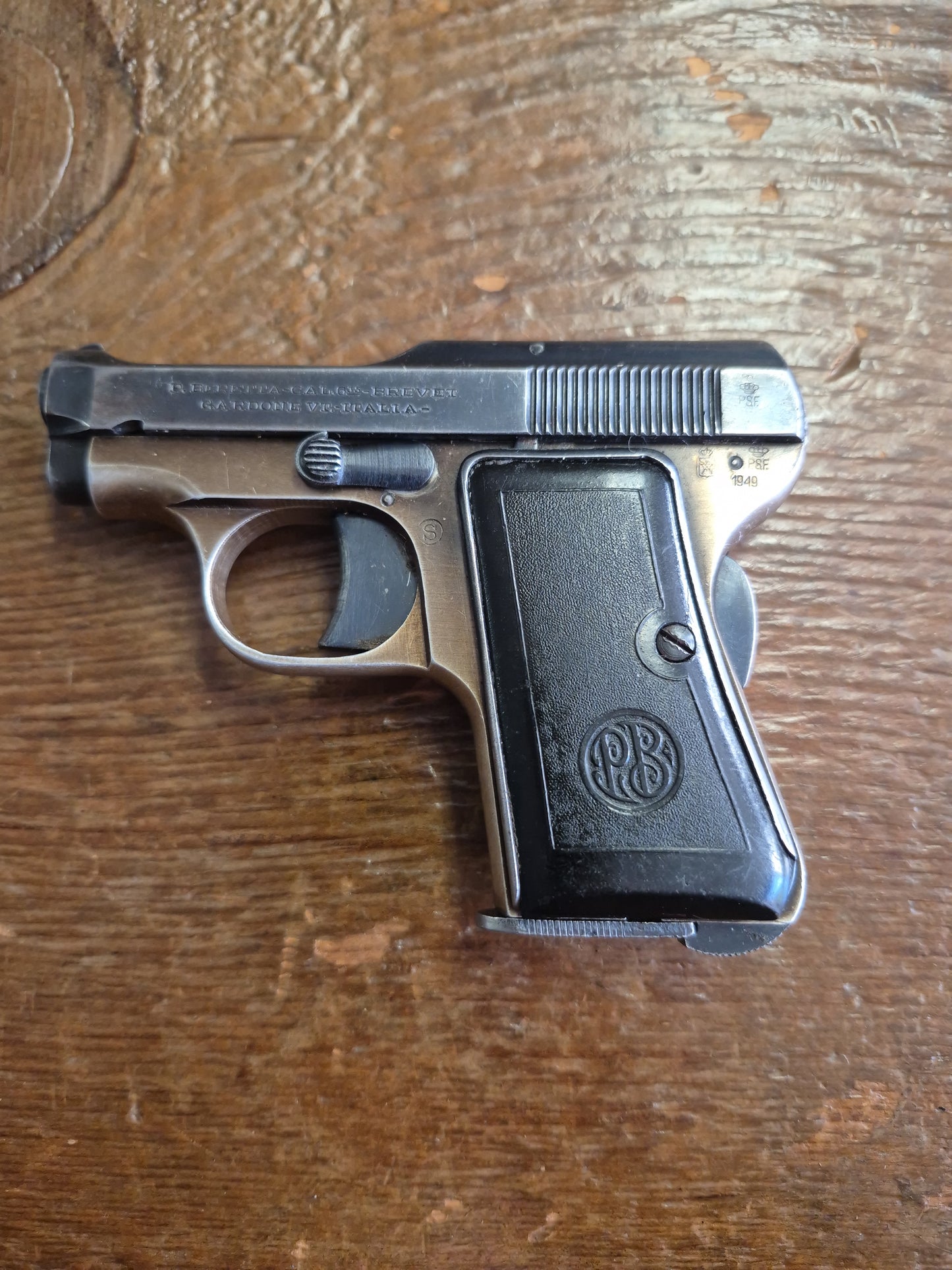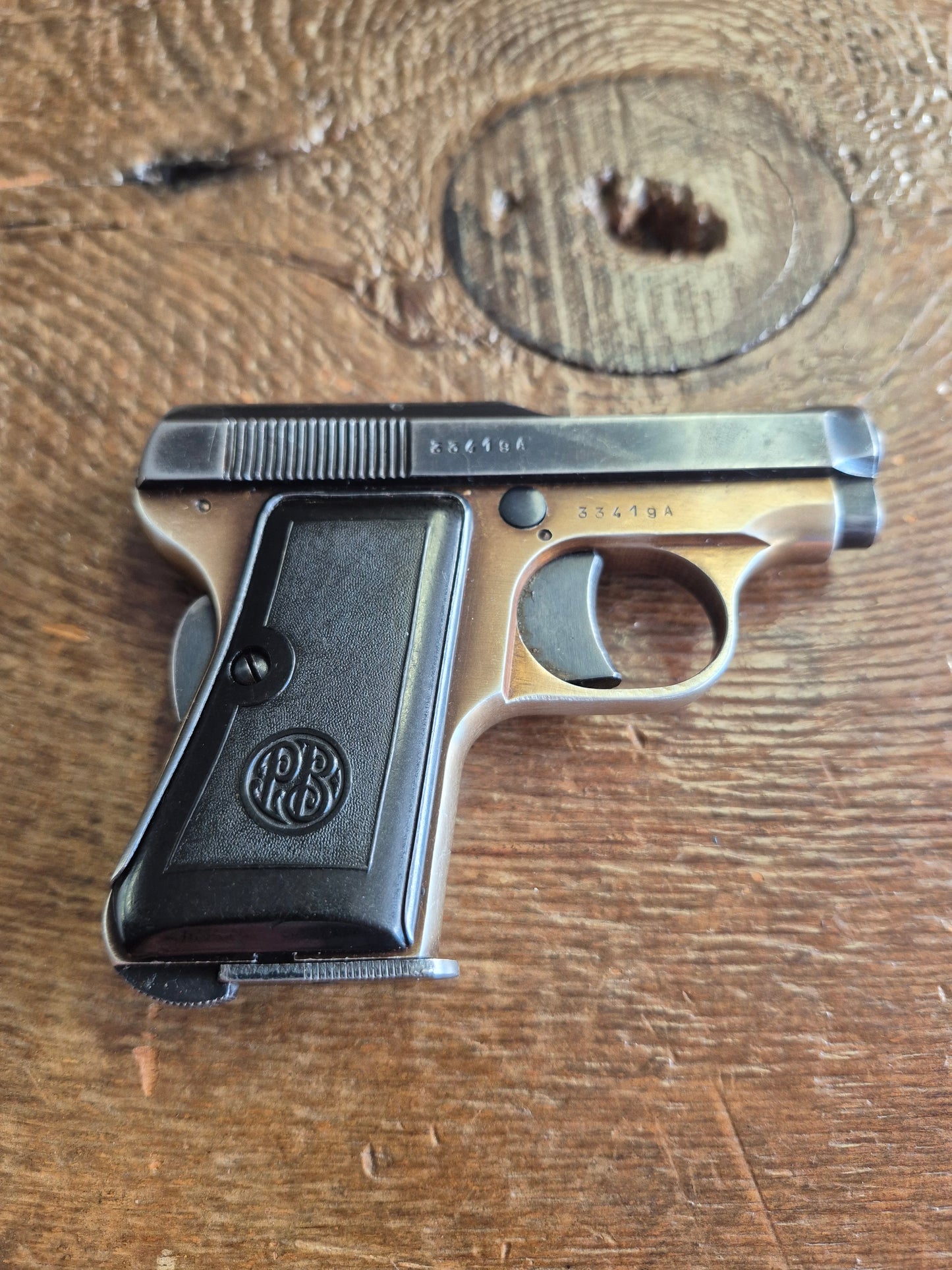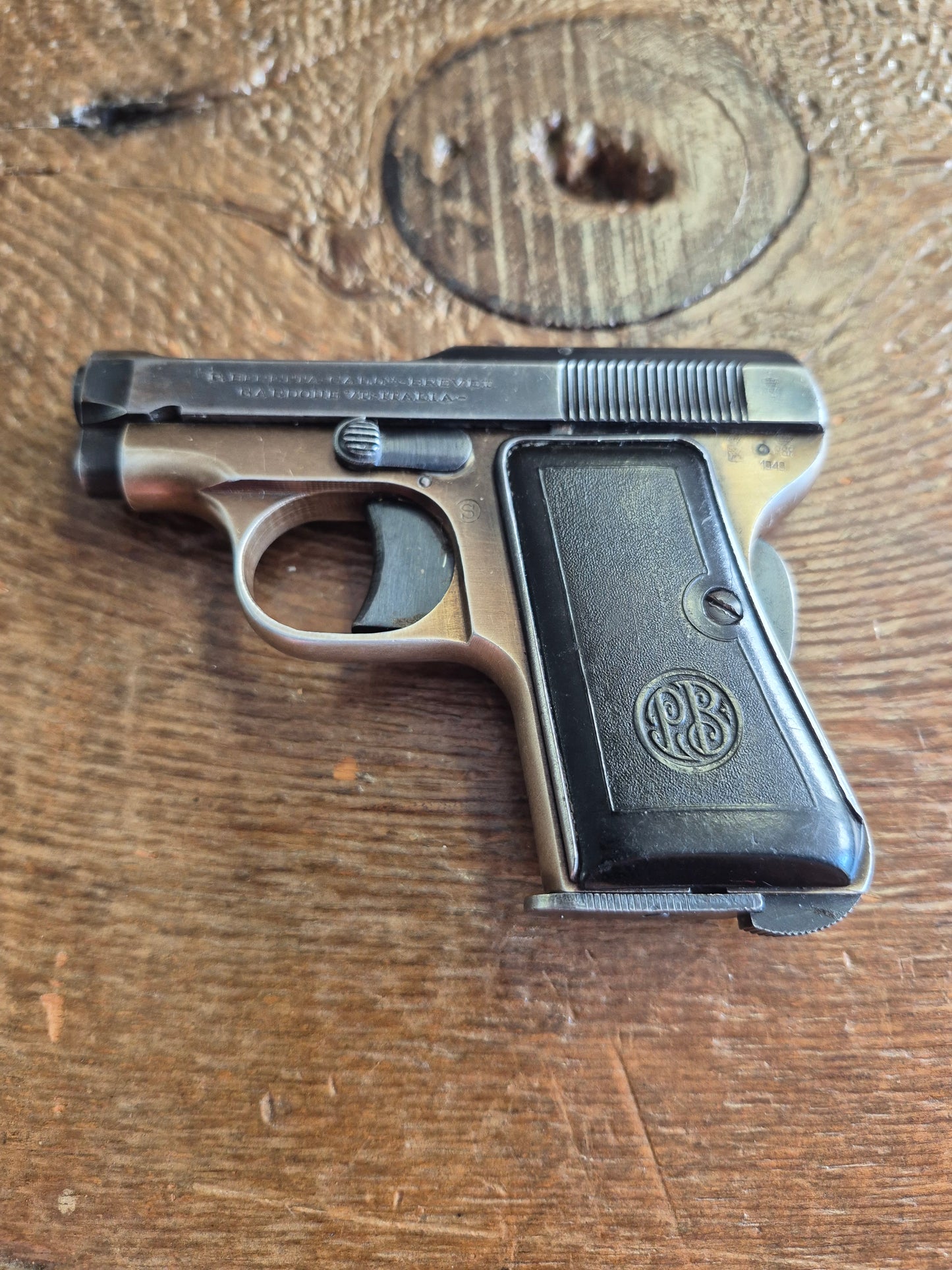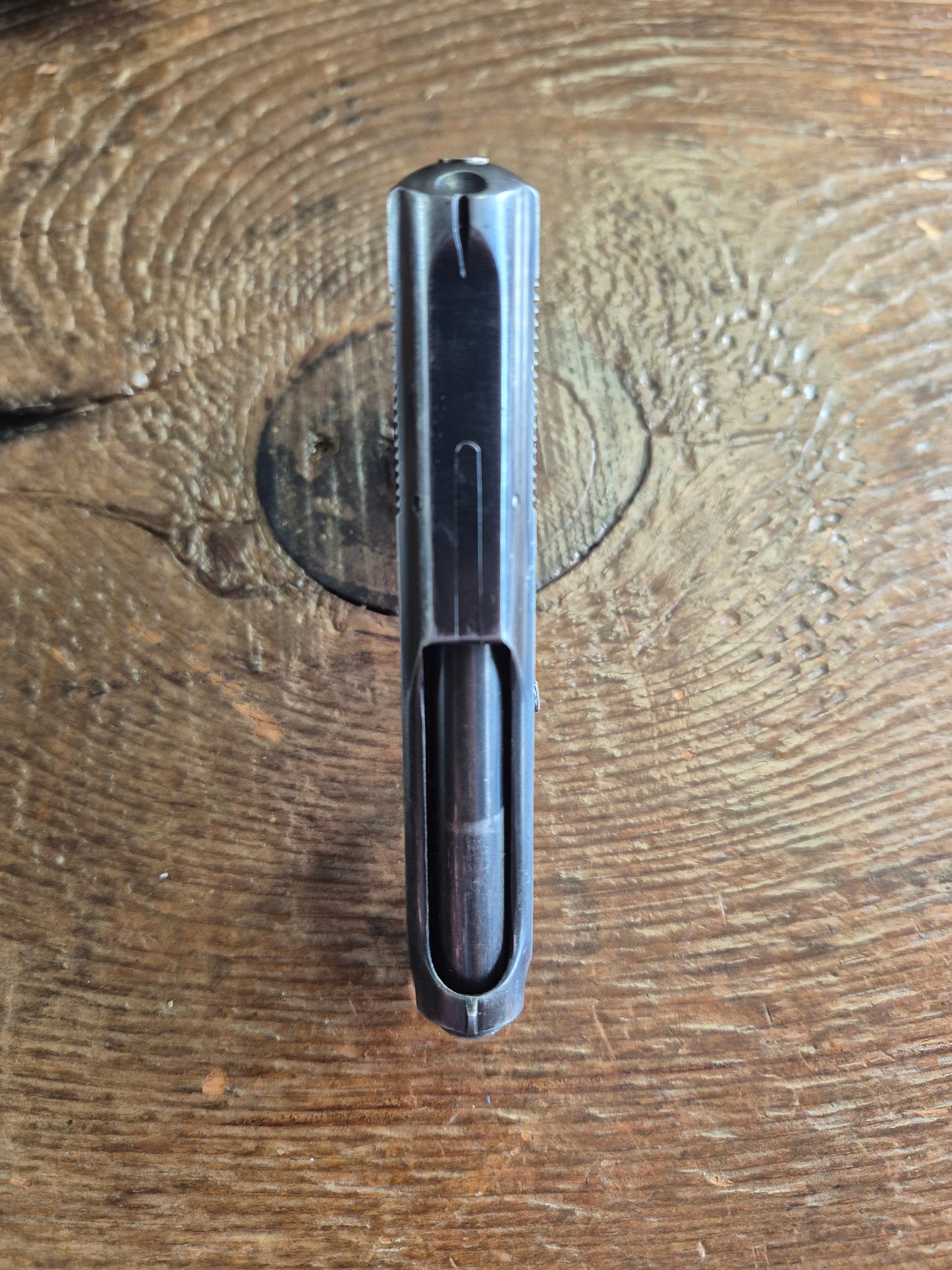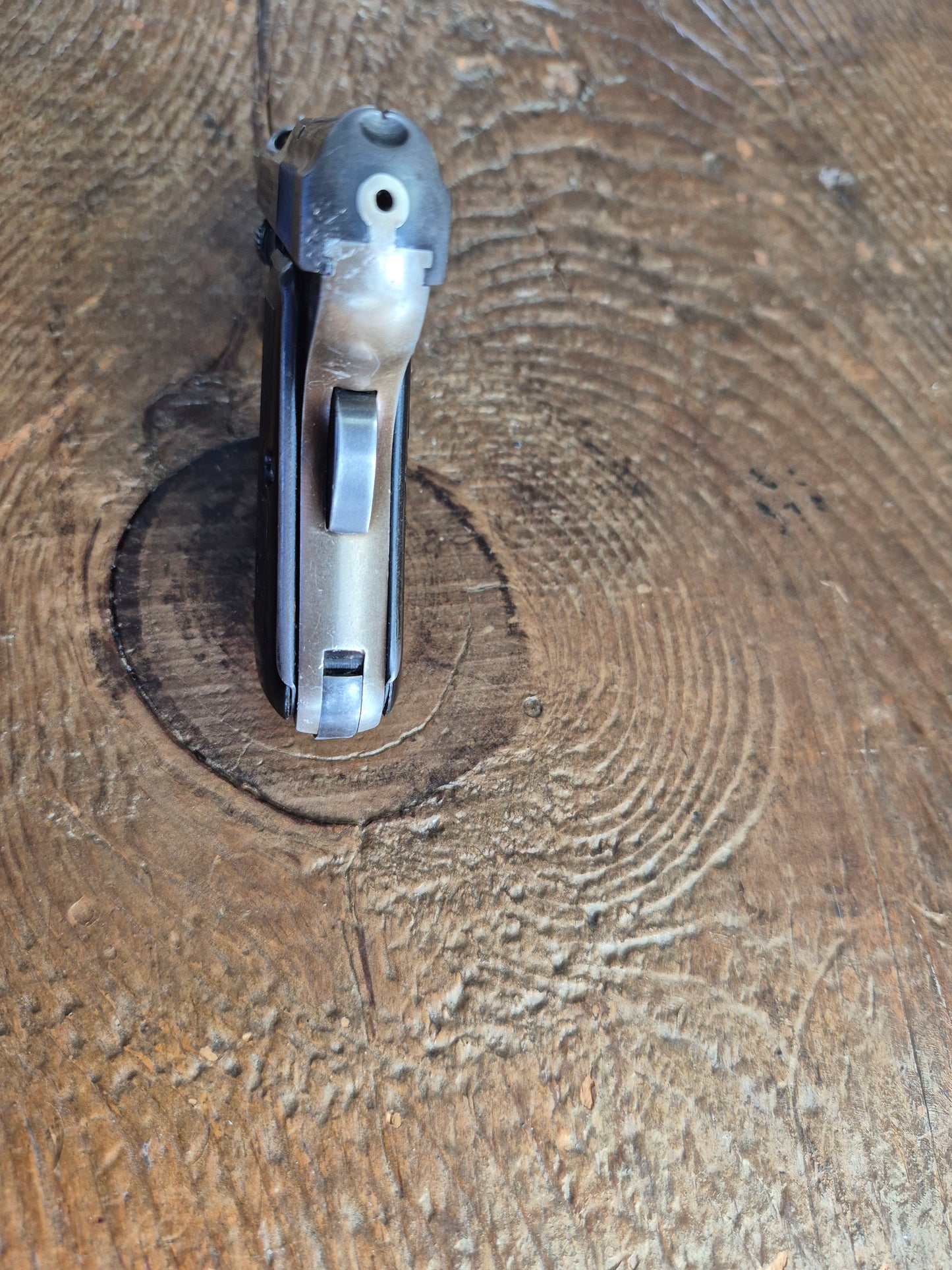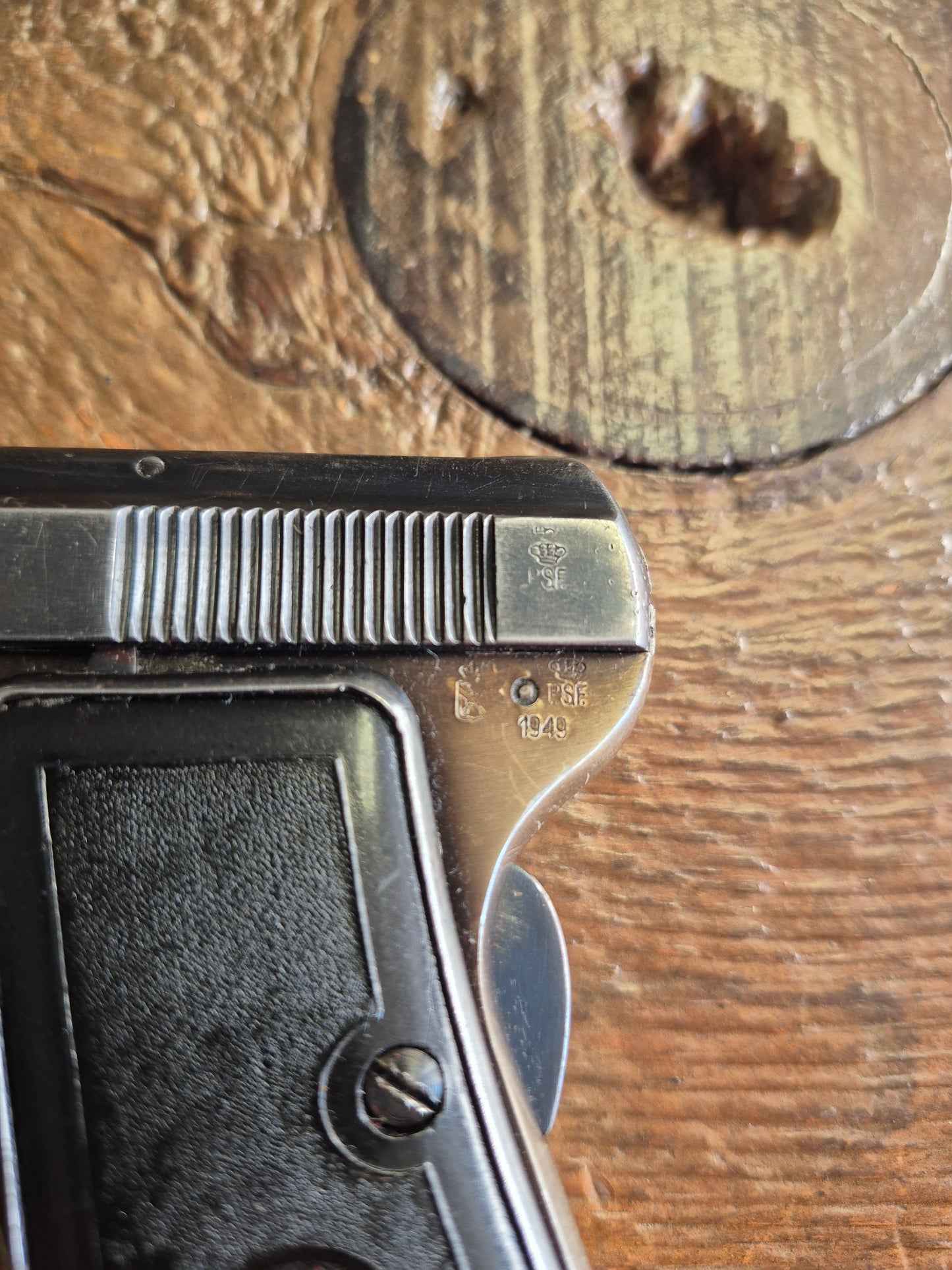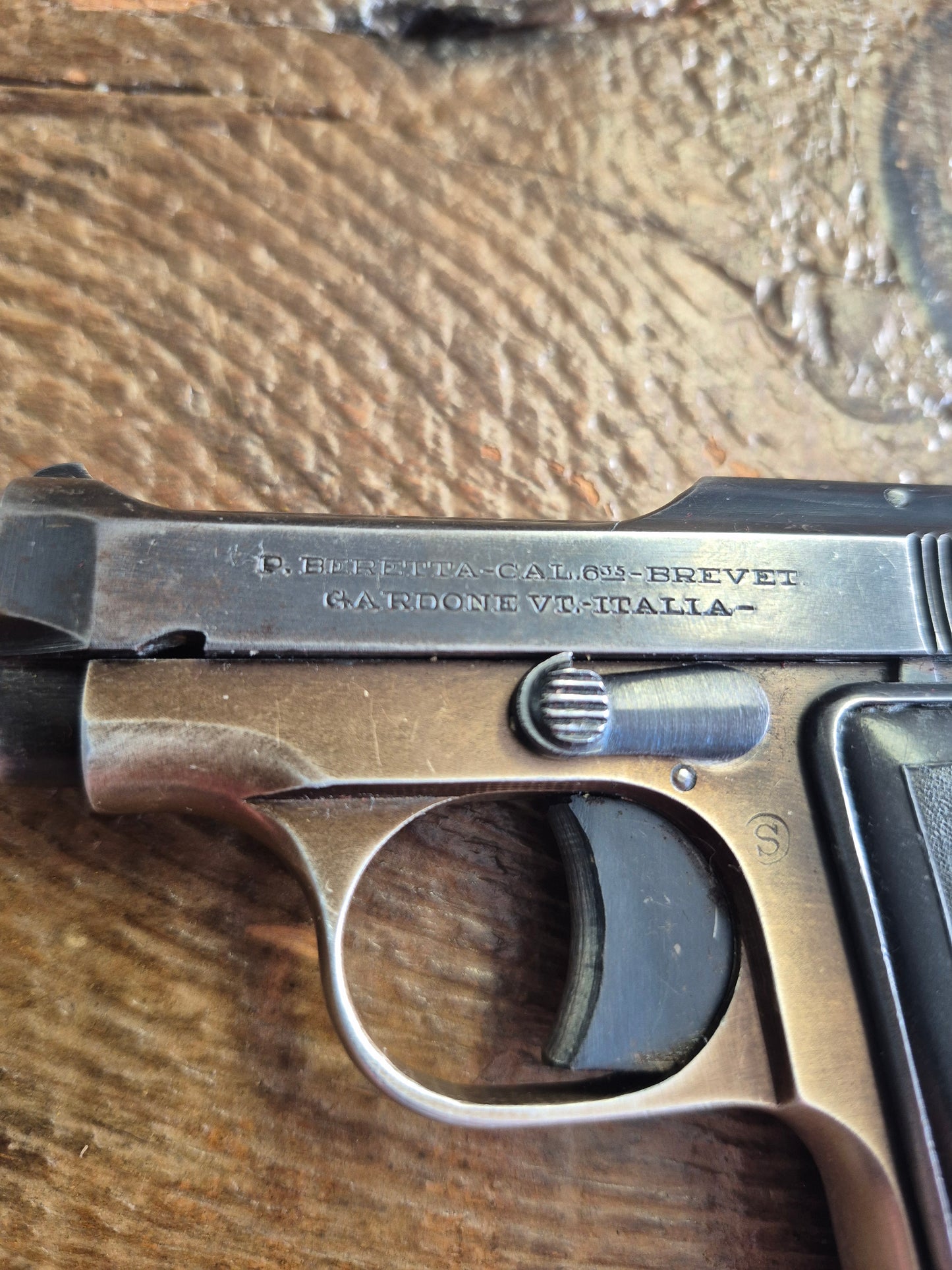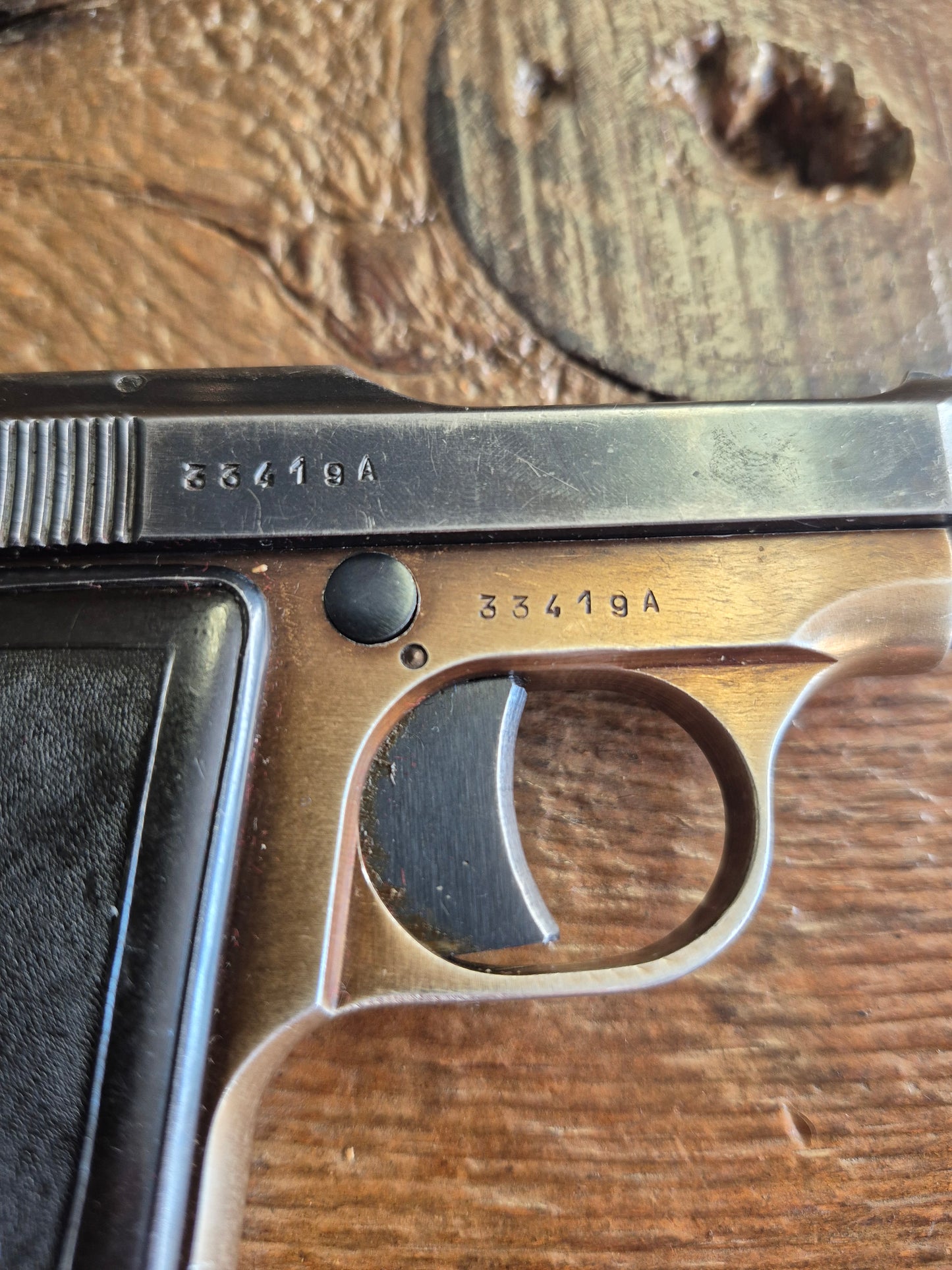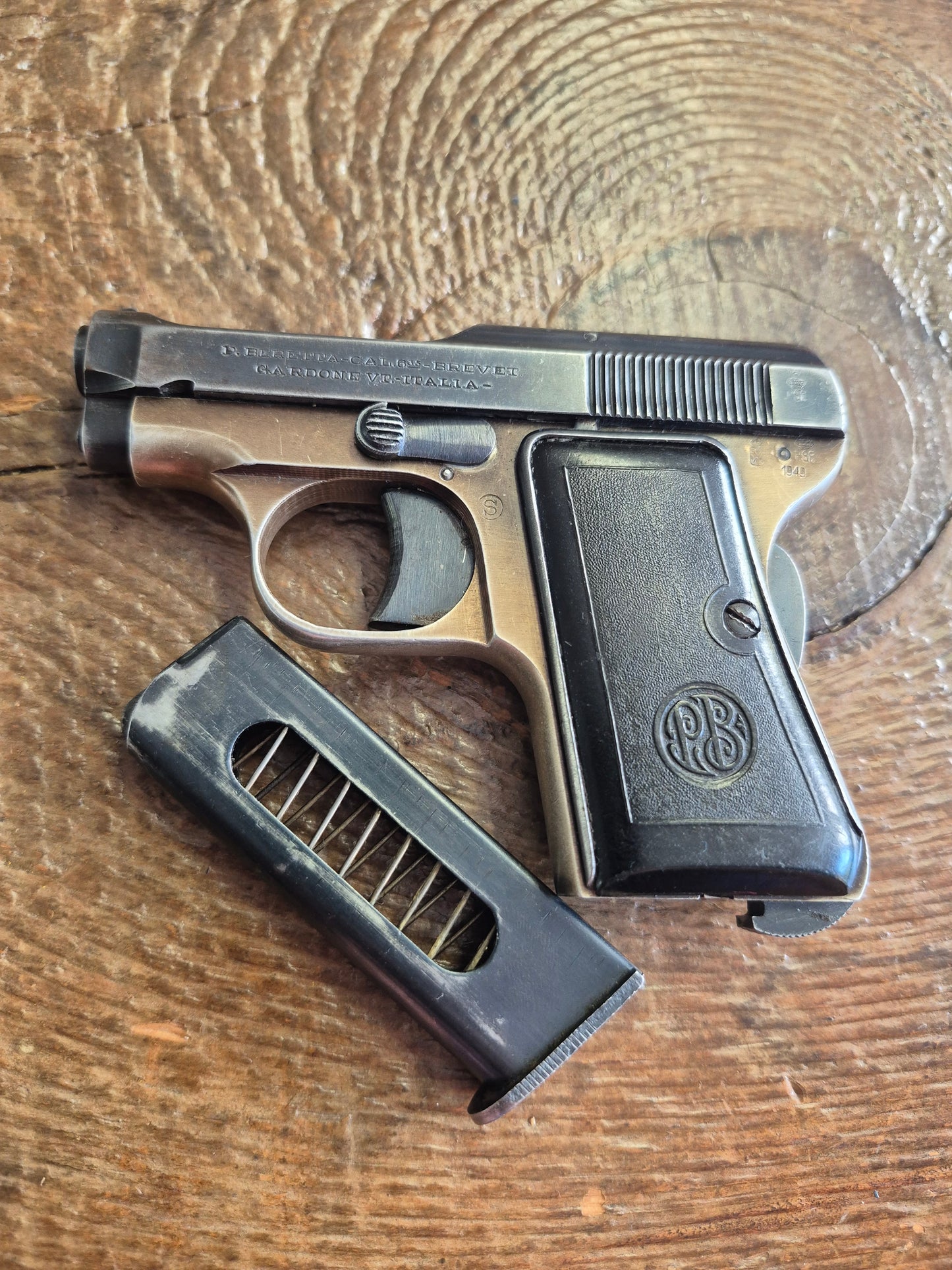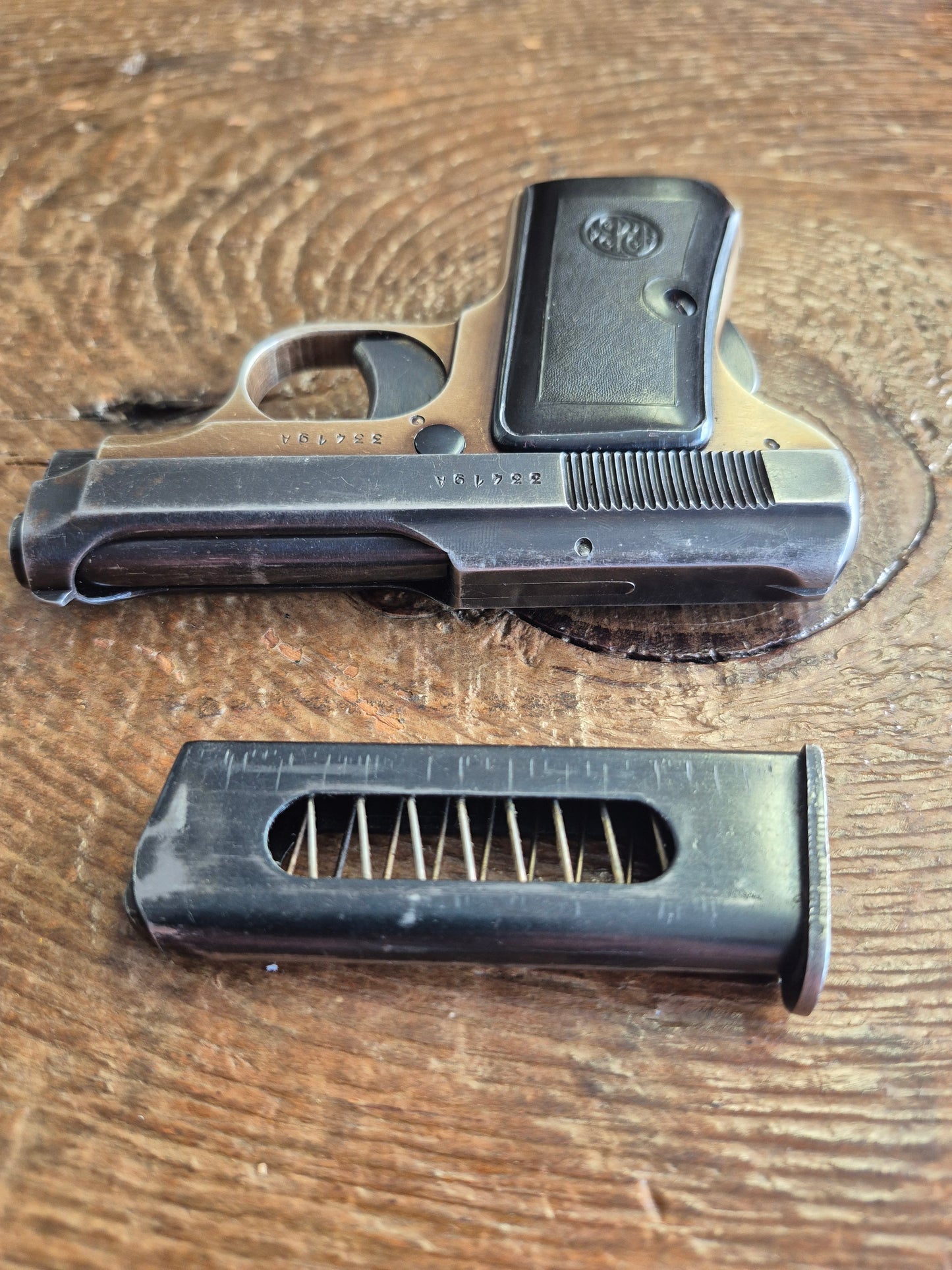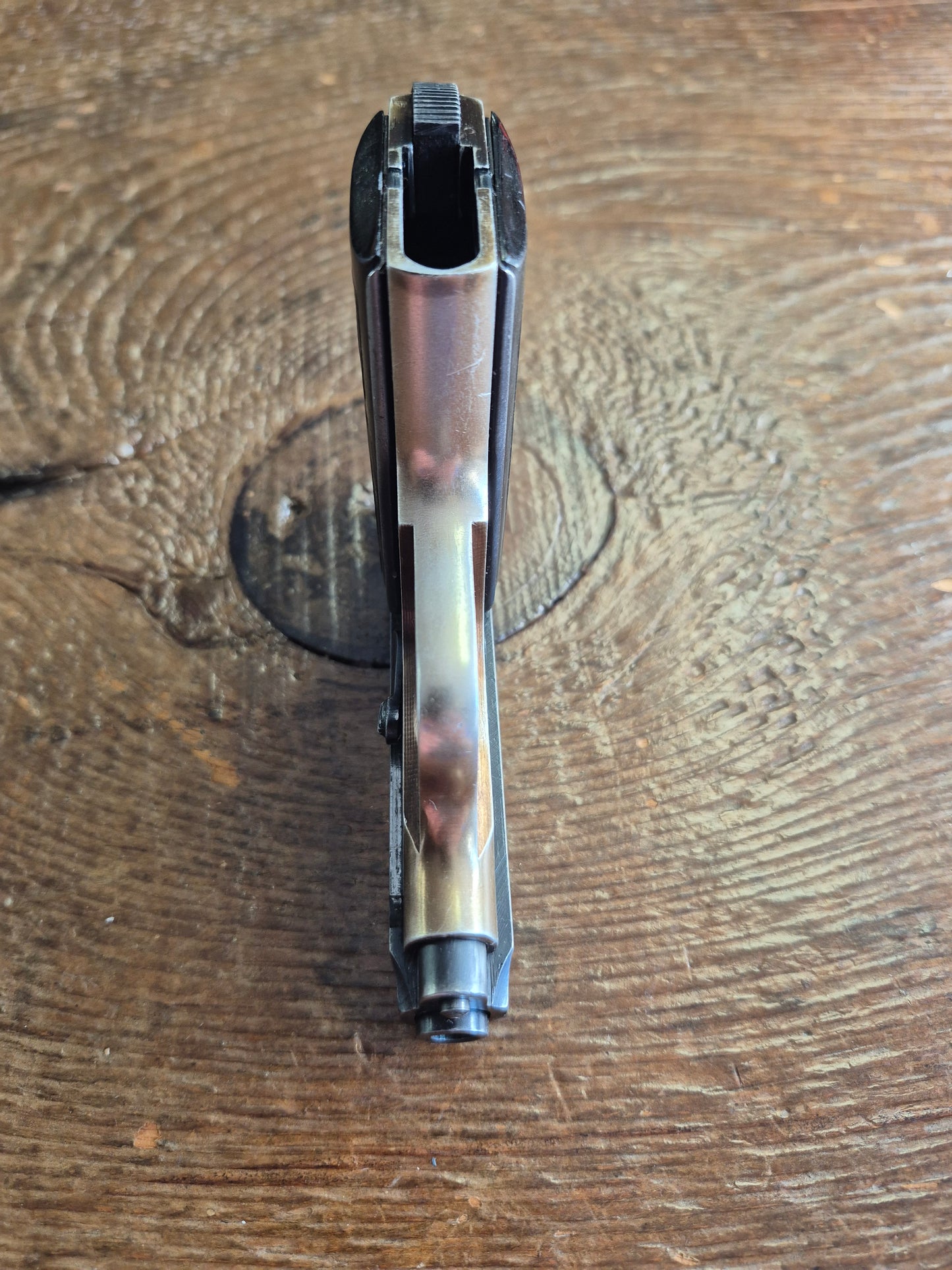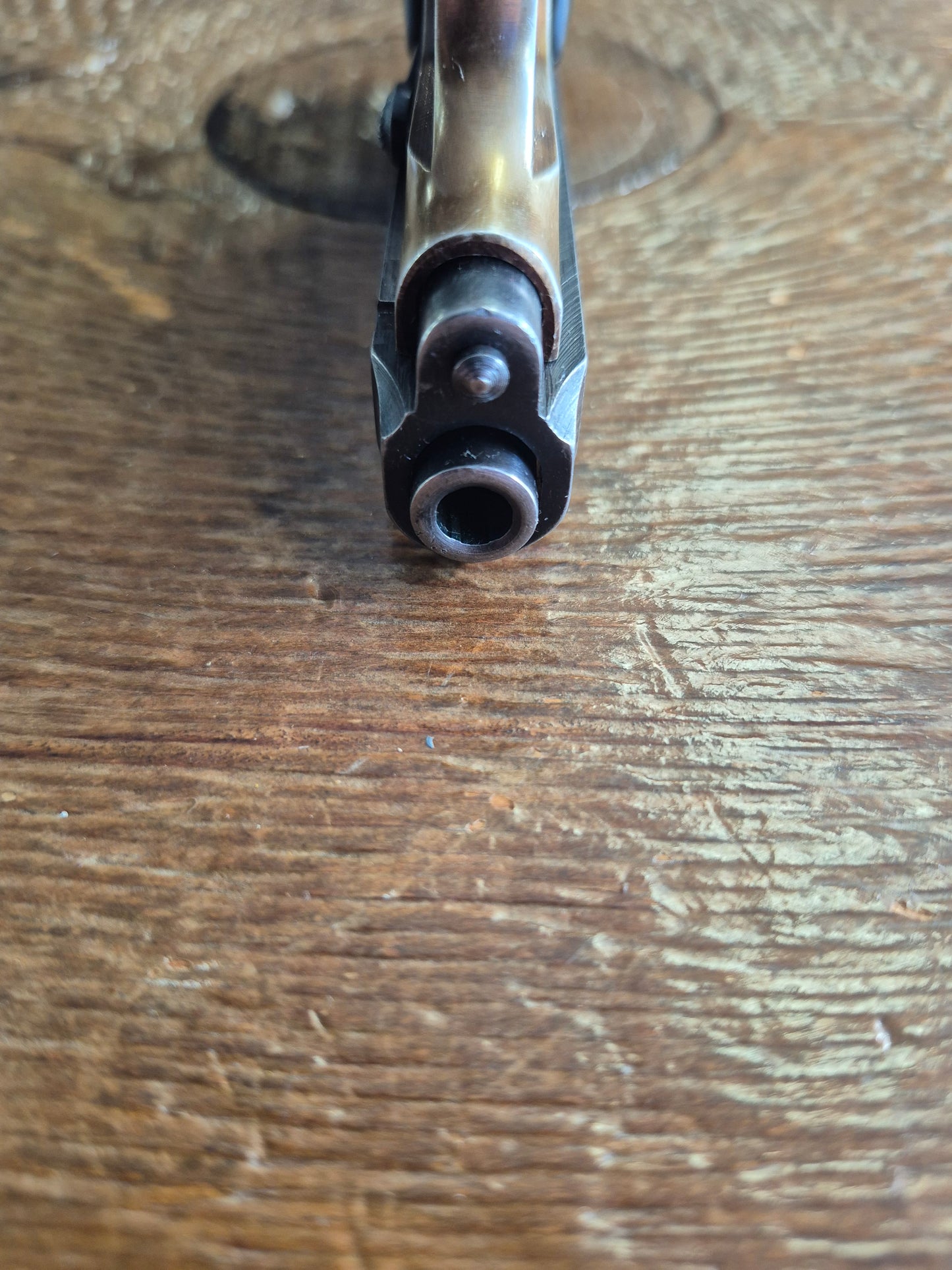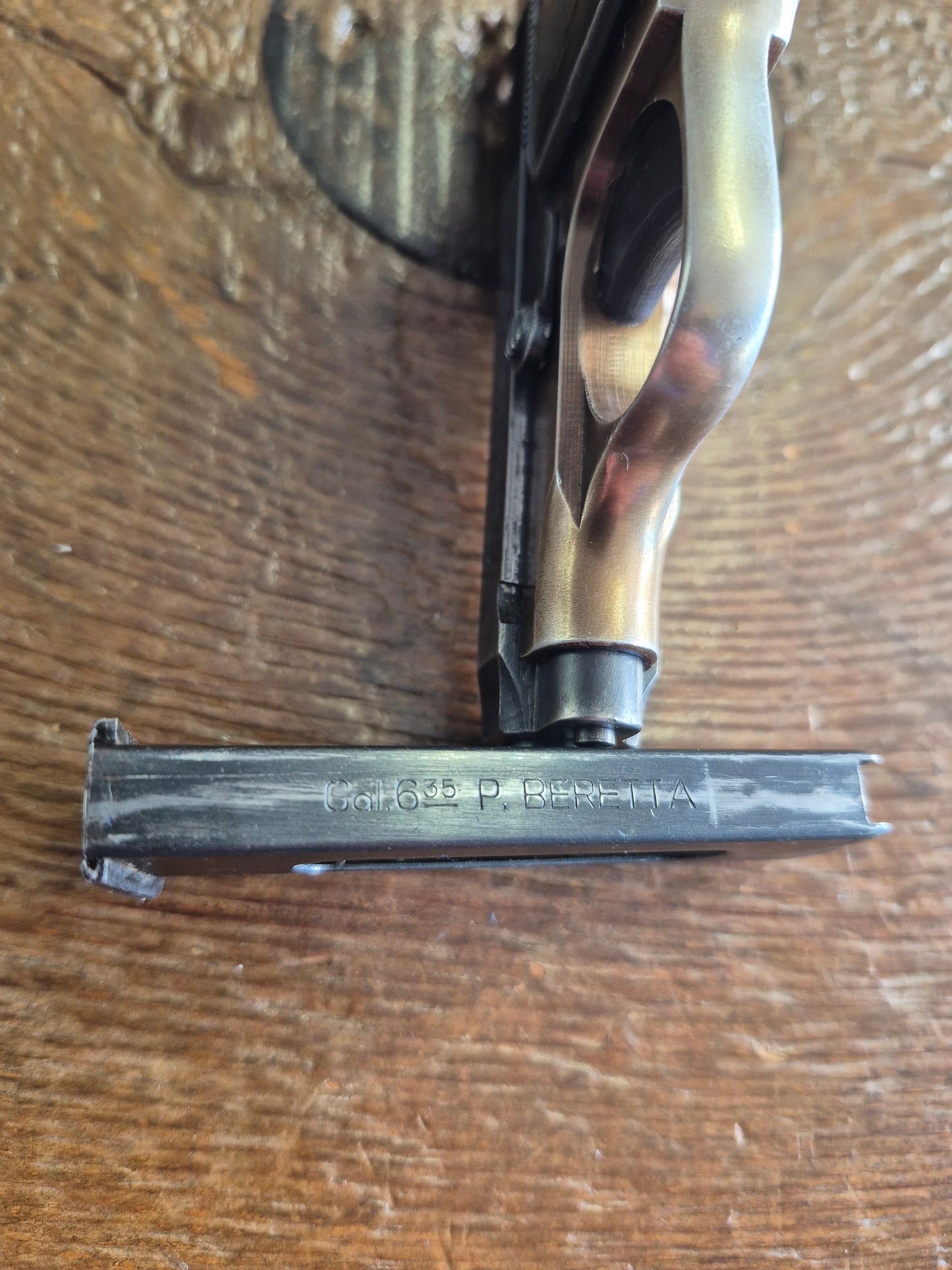Whiskey Rebellion Antiques
Beretta 418
Beretta 418
The Beretta Model 418 is a compact, striker-fired, blowback-operated semi-automatic pocket pistol chambered in 6.35mm (.25 ACP), renowned for its concealability and reliability as a self-defense handgun. It represents the culmination of Beretta's early 20th-century line of small-caliber pistols, evolving from designs originally conceived around World War I but refined postwar.
Postwar Production and Legacy (1946–1950s)
Production resumed after the war, with markings simplified to "Brevet." In 1947, the grip safety was reshaped for better ergonomics, and by the early 1950s, fully plastic grips (replacing steel-backed bakelite) and slanted slide serrations were introduced. A light-alloy frame variant appeared toward the end of the decade for reduced weight. The 418 overlapped with Beretta's more modern designs but remained popular until around 1958, with total production exceeding 140,000 units (including pre-418 models in the lineage). Special editions like the engraved Model 420 and deluxe Model 421 were also produced.
In the U.S., it was marketed as the "Bantam" from about 1952 (later rebranded "Panther" to avoid unappealing connotations), imported by J.H. Fuhring. Its cultural fame stems from Ian Fleming's James Bond novels, where the 418 (or similar early Beretta .25s like the 1919/318) served as Bond's initial sidearm from Casino Royale (1953) through From Russia with Love (1957), customized with a chamois holster and silencer. It was replaced by the Walther PPK in Dr. No (1958) after fan feedback criticized its "ladylike" power, though Fleming defended its quietness for espionage.
Today, the 418 is collectible for its historical ties to Beretta's 500-year legacy and Bond lore, valued for mouse-hunting or as a backup gun, though modern collectors note its underpowered caliber for anything beyond close-range defense.
Ships Free to the FFL of your choice!
Couldn't load pickup availability
